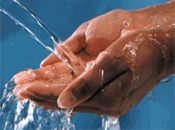 Do your homeowners know where tap water comes from? Most communities rely on lakes and streams to provide fresh drinking water, sending it through a rigorous process to purify the water before it reaches the tap. However, homeowners could be unintentionally contaminating their drinking water every time it rains, they wash the car or they use the garden hose.
Do your homeowners know where tap water comes from? Most communities rely on lakes and streams to provide fresh drinking water, sending it through a rigorous process to purify the water before it reaches the tap. However, homeowners could be unintentionally contaminating their drinking water every time it rains, they wash the car or they use the garden hose.
Stormwater drains (different from sewer systems) return rainwater to lakes, streams and treatment plants in an effort to make use of every drop of this precious resource. Storm drains are an important part the of community that helps keep the public safe from rainwater flooding carrying the extra water to a local stream, river or lake. Unfortunately, sometimes homeowners mistake these drains for sewer systems and dump chemicals into the systems, contaminating the water that will eventually end up in homes. As a city official, you can help homeowners prevent pollutants from entering your storm drains with these simple tips:
- Dispose of pet waste in the garbage. When left in the yard, hard rains can carry the waste to storm drains.
- Never apply pesticides, fertilizers or herbicides before it rains because the chemicals will wash away into the storm drains.
- Drain pools or other large tubs of water into sanitary sewer systems where the water can be properly treated.
- Dispose of chemicals properly and don’t dump them on the ground or into sewers.
- Don’t rinse a chemical spill with a hose. Use absorbent materials like kitty litter, which can be disposed of properly.
- Don’t wash your car near storm drains – take it to a car wash or consider using biodegradable soap.
